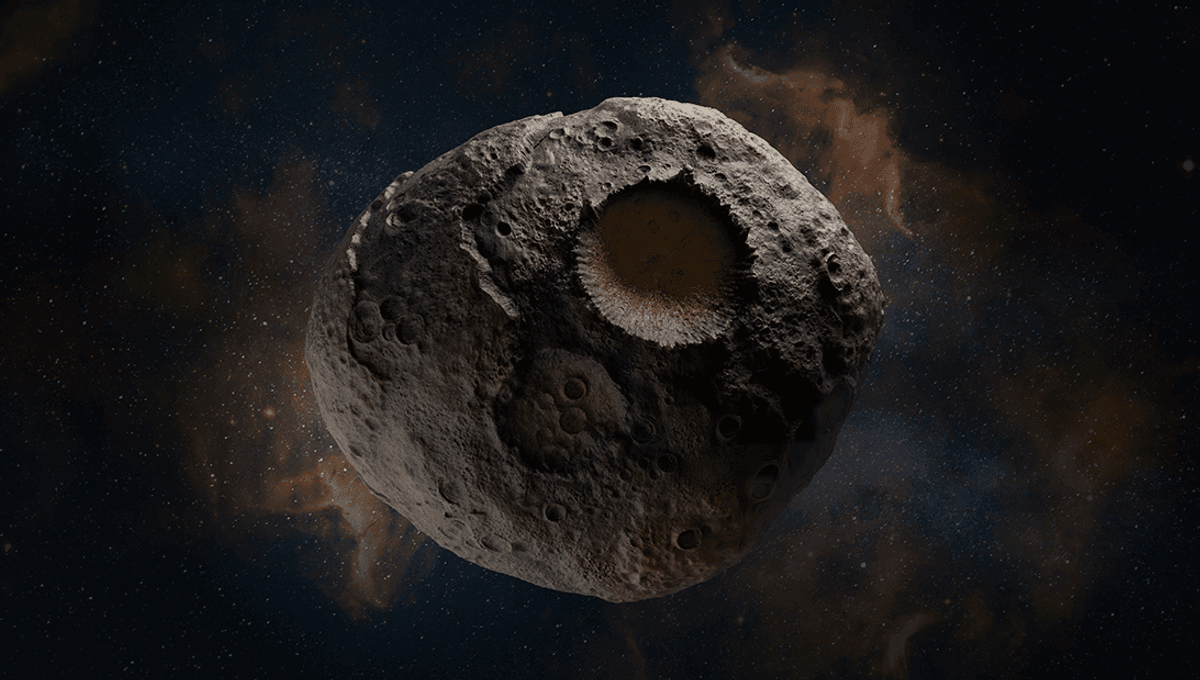
A new study has suggested that up to 60 percent of near-Earth objects could be “dark comets”, a strange class of objects that have characteristics of both asteroids and comets.
Comets are remnants of dust, ice, and rock left over from the formation of the Solar System, typically measuring 1 to 10 kilometers (0.6 to 6 miles) across, and generally going around the Sun on long orbits. They are much more easily spotted than asteroids due to their tails, which can stretch for tens of millions of kilometers.
As comets approach the Sun in their orbit and heat up, they outgas, losing gas and later (when they are even closer to the Sun) dust, which forms their distinctive trail or coma. This outgassing acts like a thruster, slightly altering the trajectory, rotation, and speed of the comet. This is termed “non-gravitational acceleration”, in that it is acceleration not produced by falling into a gravity well of objects in the Solar System.
Asteroids, meanwhile, are also rocky (and metallic) remnants from those early days of the Solar System, but do not have the ice of comets, nor their distinctive trails. They can range in size from about 530 kilometers (329 miles) in diameter to below 10 meters (33 feet) across, and are generally found on shorter orbits.
However, space objects are not quite this easy in practice to categorize. Interstellar object ‘Oumuamua, for instance, showed signs of non-gravitational acceleration without an associated coma, while a recent study found Comet Tsuchinshan-ATLAS has also failed to brighten as expected on its approach to the Sun, and may be breaking apart into smaller “blobs”, though these blobs may not last for very long.
The new study took a look at seven objects known as “dark comets”, which appear to accelerate without assistance from gravity wells or the radiation pressure of the Sun, or the Yarkovsky effect.
“Dark comets are on near-Earth orbits and exhibit no detectable comae (hence the “dark” moniker), yet experience nongravitational accelerations that are inconsistent with radiative effects,” the team explained in their study. “Outgassing is consistent with both the reported accelerations and the nondetections of comae. In addition to their accelerations and absence of comae, dark comets exhibit several other notable properties — they are generally (i) small (on the order of 10 − 100 m), (ii) rapidly rotating (0.046 − 1.99 h, and (iii) accelerating in nonradial directions.”
Examining these objects more closely, the team found that they are likely loose collections of rock that evolved from smaller objects due to gravitational effects.
“During this transition, and especially once in the NEO environment, these progenitor objects undergo significant nongravitational accelerations that cause a rotational fragmentation cascade,” the team explains. “The resulting fragments would continue to spin up and devolatilize.”
As fragments of the rock are thrown away from the main body, reducing rotational torque.
“Eventually, the torque will be insufficient to spin the object up beyond its critical rate and it will be stable against further rotational destruction. At this point, the fragments will be small, rapidly rotating, and mostly devolatilized.”
Examining the previous orbits of objects with the non-gravitational acceleration seen in these objects, the team found that they likely came from the inner band of the asteroid belt, which could help explain how water came to be on Earth.
“We think these objects came from the inner and/or outer main asteroid belt, and the implication of that is that this is another mechanism for getting some ice into the inner solar system,” Aster Taylor, a University of Michigan graduate student in astronomy and lead author of the study, said in a statement. “There may be more ice in the inner main belt than we thought. There may be more objects like this out there. This could be a significant fraction of the nearest population. We don’t really know, but we have many more questions because of these findings.”
The team estimates that between 0.5 and 60 percent of near-Earth objects could be dark comets.
“These pieces will also have ice on them, so they will also spin out faster and faster until they break into more pieces,” Taylor added. “You can just keep doing this as you get smaller and smaller and smaller. What we suggest is that the way you get these small, fast rotating objects is you take a few bigger objects and break them into pieces.”
As always, more study is needed. But while providing clues to Earth’s water mystery, it could pose a new one.
“Near-Earth objects don’t stay on their current orbits very long because the near-Earth environment is messy,” Taylor said. “They only stay in the near-Earth environment for around 10 million years. Because the solar system is much older than that, that means near-Earth objects are coming from somewhere—that we’re constantly being fed near-Earth objects from another, much larger source.”
The study is published in the journal Icarus.
Source Link: "Dark Comets" Could Make Up 60 Percent Of Near-Earth Objects